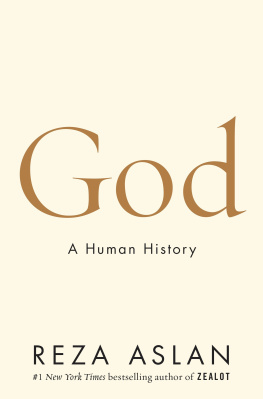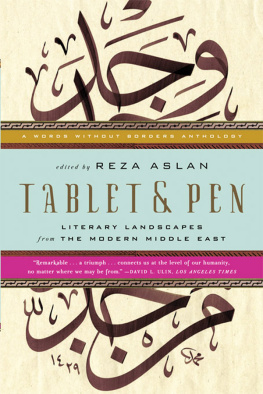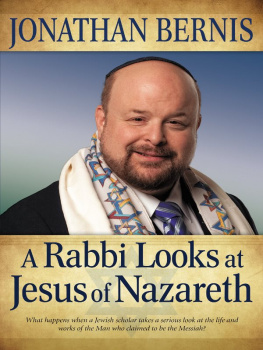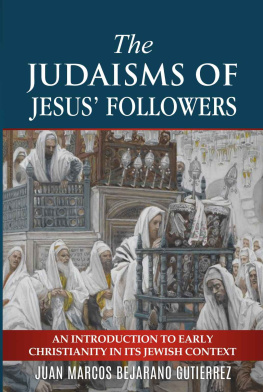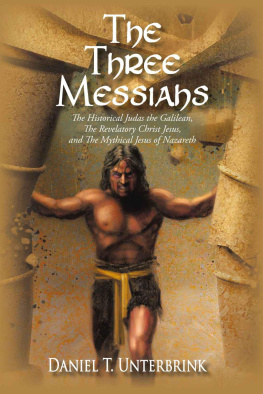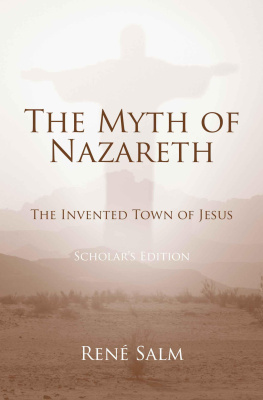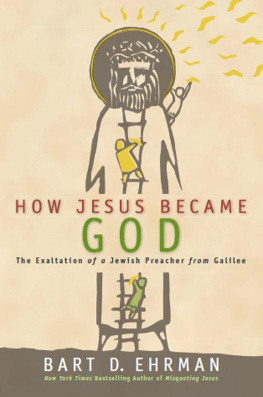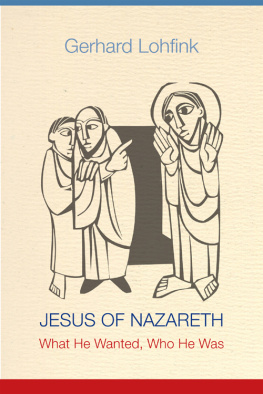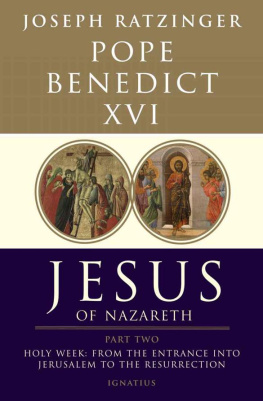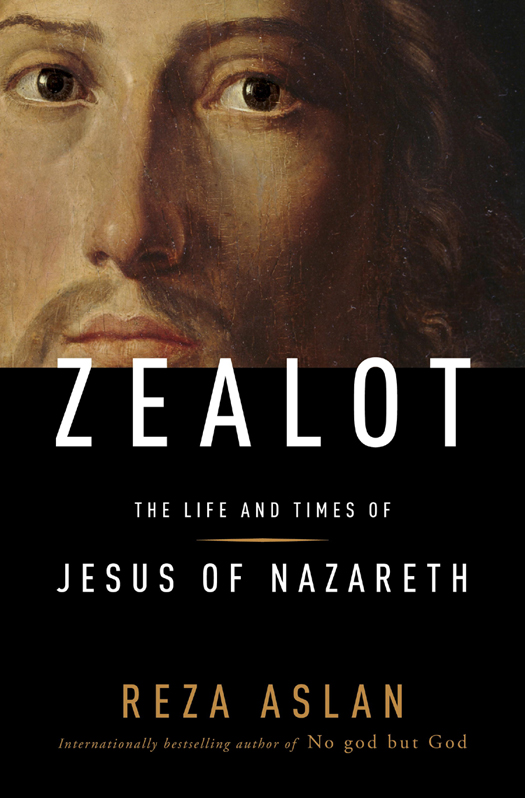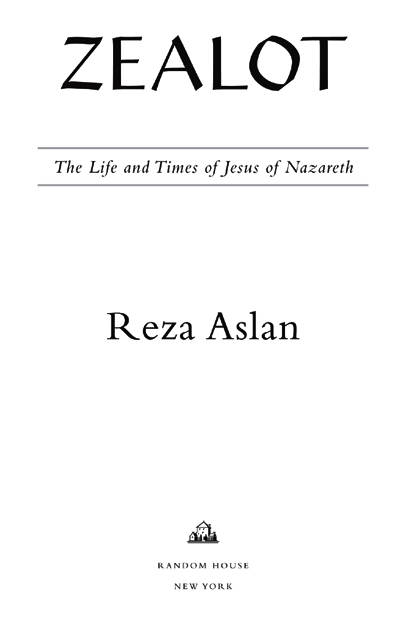Copyright 2013 by Reza Aslan
Map and illustration copyright 2013 by Laura Hartman Maestro
All rights reserved.
Published in the United States by Random House, an imprint of The Random House Publishing Group, a division of Random House, Inc., New York.
R ANDOM H OUSE and the H OUSE colophon are registered trademarks of Random House, Inc.
eISBN: 978-0-679-60353-5
Library of Congress control number: 2013941682
Cover design: Gabrielle Bordwin
Cover painting: Giovanni Battista Cima da Conegliano, bpk, Berlin/Gemldegalerie Alte Meister, Dresden/Elke Estel/Hans-Peter Klut/Art Resource, N.Y.
www.atrandom.com
v3.1
Do not think that I have come to bring peace on earth. I have not come to bring peace, but the sword.
M ATTHEW 10:34
Contents
Authors Note
When I was fifteen years old, I found Jesus.
I spent the summer of my sophomore year at an evangelical youth camp in Northern California, a place of timbered fields and boundless blue skies, where, given enough time and stillness and soft-spoken encouragement, one could not help but hear the voice of God. Amidst the man-made lakes and majestic pines my friends and I sang songs, played games, and swapped secrets, rollicking in our freedom from the pressures of home and school. In the evenings, we gathered in a firelit assembly hall at the center of the camp. It was there that I heard a remarkable story that would change my life forever.
Two thousand years ago, I was told, in an ancient land called Galilee, the God of heaven and earth was born in the form of a helpless child. The child grew into a blameless man. The man became the Christ, the savior of humanity. Through his words and miraculous deeds, he challenged the Jews, who thought they were the chosen of God, and in return the Jews had him nailed to a cross. Though he could have saved himself from that gruesome death, he freely chose to die. His death was the point of it all, for his sacrifice freed us all from the burden of our sins. But the story did not end there, because three days later, he rose again, exalted and divine, so that now, all who believe in him and accept him into their hearts will also never die, but have eternal life.
For a kid raised in a motley family of lukewarm Muslims and exuberant atheists, this was truly the greatest story ever told. Never before had I felt so intimately the pull of God. In Iran, the place of my birth, I was Muslim in much the way I was Persian. My religion and my ethnicity were mutual and linked. Like most people born into a religious tradition, my faith was as familiar to me as my skin, and just as disregardable. After the Iranian revolution forced my family to flee our home, religion in general, and Islam in particular, became taboo in our household. Islam was shorthand for everything we had lost to the mullahs who now ruled Iran. My mother still prayed when no one was looking, and you could still find a stray Quran or two hidden in a closet or a drawer somewhere. But, for the most part, our lives were scrubbed of all trace of God.
That was just fine with me. After all, in the America of the 1980s, being Muslim was like being from Mars. My faith was a bruise, the most obvious symbol of my otherness; it needed to be concealed.
Jesus, on the other hand, was America. He was the central figure in Americas national drama. Accepting him into my heart was as close as I could get to feeling truly American. I do not mean to say that mine was a conversion of convenience. On the contrary, I burned with absolute devotion to my newfound faith. I was presented with a Jesus who was less Lord and Savior than he was a best friend, someone with whom I could have a deep and personal relationship. As a teenager trying to make sense of an indeterminate world I had only just become aware of, this was an invitation I could not refuse.
The moment I returned home from camp, I began eagerly to share the good news of Jesus Christ with my friends and family, my neighbors and classmates, with people Id just met and with strangers on the street: those who heard it gladly, and those who threw it back in my face. Yet something unexpected happened in my quest to save the souls of the world. The more I probed the Bible to arm myself against the doubts of unbelievers, the more distance I discovered between the Jesus of the gospels and the Jesus of historybetween Jesus the Christ and Jesus of Nazareth. In college, where I began my formal study of the history of religions, that initial discomfort soon ballooned into full-blown doubts of my own.
The bedrock of evangelical Christianity, at least as it was taught to me, is the unconditional belief that every word of the Bible is God-breathed and true, literal and inerrant. The sudden realization that this belief is patently and irrefutably false, that the Bible is replete with the most blatant and obvious errors and contradictionsjust as one would expect from a document written by hundreds of hands across thousands of yearsleft me confused and spiritually unmoored. And so, like many people in my situation, I angrily discarded my faith as if it were a costly forgery I had been duped into buying. I began to rethink the faith and culture of my forefathers, finding in them as an adult a deeper, more intimate familiarity than I ever had as a child, the kind that comes from reconnecting with an old friend after many years apart.
Meanwhile, I continued my academic work in religious studies, delving back into the Bible not as an unquestioning believer but as an inquisitive scholar. No longer chained to the assumption that the stories I read were literally true, I became aware of a more meaningful truth in the text, a truth intentionally detached from the exigencies of history. Ironically, the more I learned about the life of the historical Jesus, the turbulent world in which he lived, and the brutality of the Roman occupation that he defied, the more I was drawn to him. Indeed, the Jewish peasant and revolutionary who challenged the rule of the most powerful empire the world had ever known and lost became so much more real to me than the detached, unearthly being I had been introduced to in church.
Today, I can confidently say that two decades of rigorous academic research into the origins of Christianity has made me a more genuinely committed disciple of Jesus of Nazareth than I ever was of Jesus Christ. My hope with this book is to spread the good news of the Jesus of history with the same fervor that I once applied to spreading the story of the Christ.
There are a few things to keep in mind before we begin our examination. For every well-attested, heavily researched, and eminently authoritative argument made about the historical Jesus, there is an equally well-attested, equally researched, and equally authoritative argument opposing it. Rather than burden the reader with the centuries-long debate about the life and mission of Jesus of Nazareth, I have constructed my narrative upon what I believe to be the most accurate and reasonable argument, based on my two decades of scholarly research into the New Testament and early Christian history. For those interested in the debate, I have exhaustively detailed my research and, whenever possible, provided the arguments of those who disagree with my interpretation in the lengthy notes section at the end of this book.


